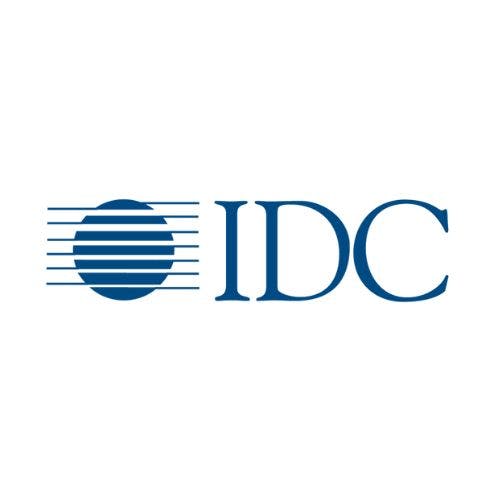Senior Research Director, Tom Seal and Research Manager European Enterprise Solution, Charles Aladesuru from IDC share their insights for managing the growing complexity in subscriptions, tax, invoicing and payments as SaaS businesses start to head upmarket and grow their customer base. They'll share their advice on setting your subscription management processes for growth and more.


While focusing on running your business, growing your customer base and evolving your product, can you efficiently manage the growing complexity in subscriptions records, tax, invoicing and payments?
Online payment providers are a good starting point for your SaaS start-up, enabling you to take one-off payments as well as recurring subscription payments. These payment gateways can be quick and easy to implement, but can't help you manage the diversity of customers that your successful SaaS business can attract.
SaaS businesses can scale extremely fast, and growth is often driven by attracting new customer groups, such as those in new regions, size segments or industries. With this success comes the need to manage the subscription requirements of each new group, which can vary for commercial and legislative reasons. To prepare for success, it's critical to select tools that offer the flexibility to support the needs of your future customer base, while maintaining simplicity for you.
Heading upmarket
As your business looks to grow and expand, there is often an opportunity to win corporate-scale deals. While you may welcome the opportunity to increase growth, corporate customers can have very specific needs. Key areas that may vary between enterprises and particularly versus small businesses include:
- Purchase orders: Many enterprises need a purchase order number for an invoice to be accepted and paid.
- Multiyear deals: Enterprise deals will often have a pre-agreed multiyear term, rather than running month to month. This can vary from customer to customer, depending on what was negotiated and when.
- Unique licensing and discounted structure: Enterprises may want a particular license structure that differs from your standard.
While there is inconsistency in the needs of enterprises, SaaS leaders must find a way to deal with these requirements as the opportunity for enterprise sales could be too good to miss. But this doesn't mean they should accept internal inefficiency as a result.
To support a wider customer base, you will need to find a way to cater to enterprises without isolated processes — a system that can combine workflows for invoicing and collections in addition to online payments to create a single view, while also addressing:
- Invoice formatting.
- Invoices being sent on time.
- Multicurrency management.
- Flexible license records and pricing structures.
Setting up for success — solutions
Cash flow remains a main focus for businesses. Gaining real-time visibility of your cash position and getting insight and control of what lies ahead is just as important as cash flow forecasting. Non-financial data sets, available from customer churn rates and customer health scores, indirectly impact finance and are key to identifying areas for opportunities. SaaS decision makers must be able to see the full picture, despite the multiple payment channels.
Manually entered B2B payments can create difficulties and delays in understanding their cash position; more importantly they can increase the risk of financial difficulties. Though it is still widely adopted, manual invoicing will not be a sustainable long-term solution due to time consumption and human error.
As you start upselling to enterprises you will need to implement a solution that combines multiple payment channels and enables you to create a single source of truth. This enables your business to shorten the period, close, consolidate and report on financial performance. Having a clearer view of the financial position enables your business to make more informed decisions. This can only be efficiently attained through one unified environment.
Automation is key to shift the business focus from transactional activities to financial planning with analytics and insight. Artificial intelligence is being widely adopted. This helps recognise revenues and error reductions, and supports core business processes — a vital process being delivering invoices on time. Getting this right could determine when your business gets paid. This is a critical step to achieving positive financial health.
Selling SaaS across borders
The international marketplace offers a significant opportunity to increase customer volume and revenue. When selling internationally, your initial considerations might be the currency, language or price sensitivity — all part of the bigger picture in localisation. This could be a huge stumbling block to overcome with exposure to fraud and compliance with different tax regimes. The inescapable reality of international business needs to be understood and addressed as risk/return exists together.
Almost every country has its own tax requirements, and this creates new workloads in addition to your existing operations. The short-term perspective is that leakages due to currency conversions could be overlooked, but as your business grows so will these problems. Over time, this could become a significant loss for a business facilitating high-value transactions using manual processes.
Conclusion: Prepare your subscription management processes for growth
At the front end of the business your sales team is tasked with securing new deals and capitalizing on all available opportunities. To cope with new deal variations, you will need to be savvy when shifting to a solution to support the back end of the business in delivering a single source of truth. It will also be vital when venturing into foreign markets. This mind shift needs to be a priority to manage the complexities that come with scaling customers to enterprises and being able to prevent fragmentation within the business.
With Paddle's subscription management platform, you can conquer upmarket and downmarket — all from one place. Speak to an expert to supercharge your digital company's growth.





